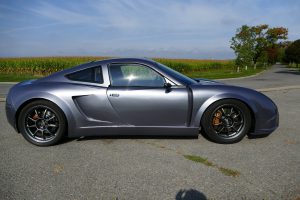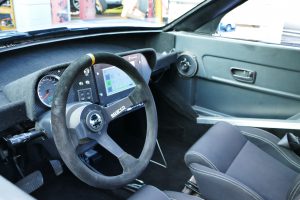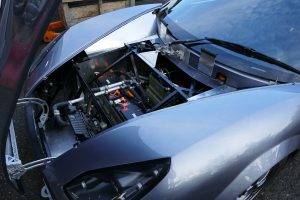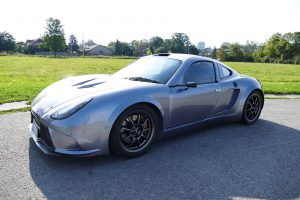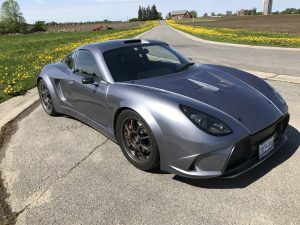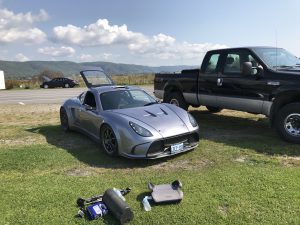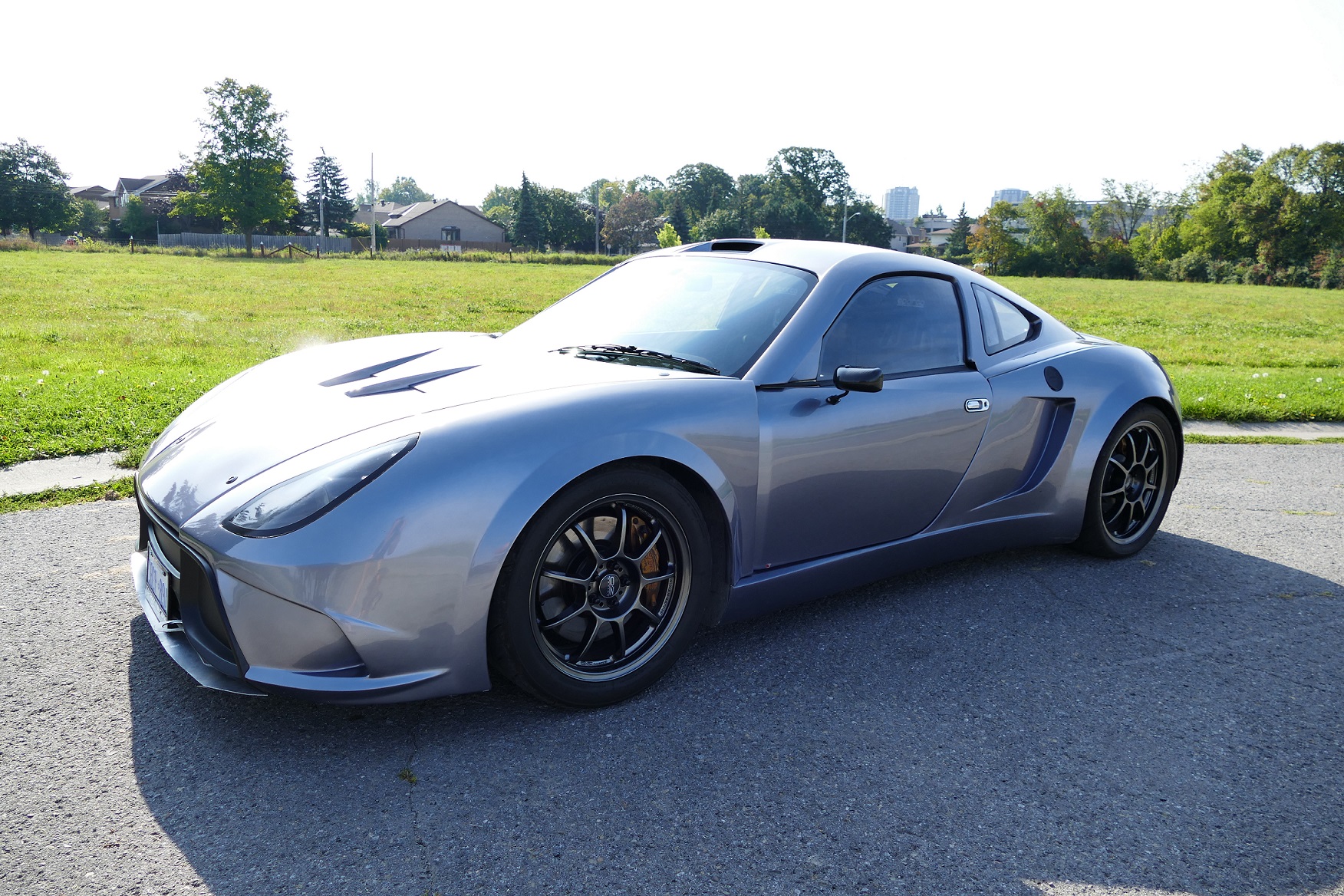A look at the Tesla powered EV-Controls 818
Many people have been asking for more details on our 818 development car, so this post will give you a quick look at what went in to building it. In February 0f 2016 we took delivery of our 818C kit from Factory Five. we had already been working on gaining control of the Tesla drive unit that we wanted to use in the car for a while at that point.
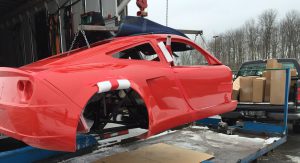
Here are some pictures showing the build process and general layout of the car. This is not intended as a tutorial or guide, just a look at how we did things.
We planned to use two complete Chevy volt battery packs and a large Tesla rear drive unit, so the first step was to figure out how these components would be laid out in the 818 chassis, which was designed to accept Subaru running gear. We ended up managing to fit everything in the chassis without any radical frame modifications.
We did not alter any suspension pickup points, or the main tube structure of the frame. We had to modify the front and rear sections of the frame to accommodate the batteries and motor, and remove the Subaru motor mounts.
Our final layout had all the batteries mounted very low in the chassis, and outside of the passenger compartment, which was important to us from a safety perspective. We used the original steel mounting plates from the Chevy volt battery pack assemblies, and built support structures from steel tubing. We then welded the mounting plates to the chassis. We are running the two Chevy volt battery packs in parallel, and using the BMS from the volt packs to monitor and balance the cell voltages. We have a main disconnect accessible from the drivers seat in the car that can break the circuit for the packs in case of a problem.
Most of the HV parts including contactors, HV cabling and terminals were sourced from EV West. There is a J1772 charge connector located where the fuel filler would have originally been, wired to the Chevy volt 3.3Kw charger.
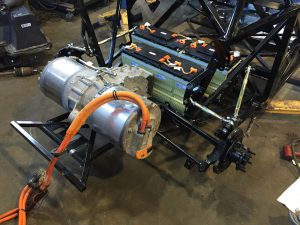
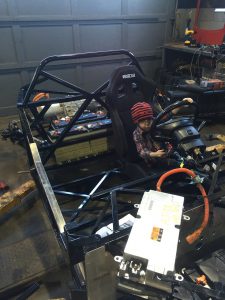
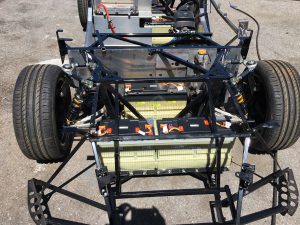
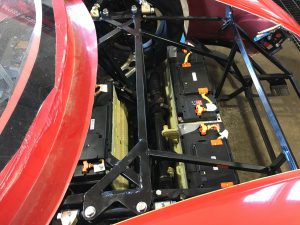
Here is a look at the frame modifications from underneath the car;
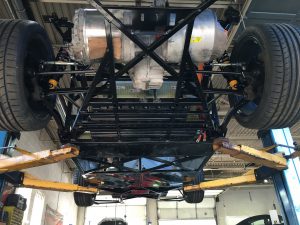
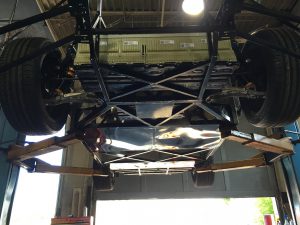
We used spindles from a JDM Subaru STI, along with the large disc brakes from that car. We had Tad at www.driveshaftshop.com build some axles using the tesla inner joints based on measurements he has us take. They fit perfectly the first time and have given us zero problems in 5000 miles of use, including some 9 second quarter mile passes.
We first drove the car on the street in July of 2016. At this point we had control of the inverter using some hardware we had developed here.
There are 2 cooling systems in place, one for the inverter and battery charger, and another for the batteries. Our T1-C controller turns on the cooling pump and fan for the inverter and battery charger based on temperatures it reads over CAN from the inverter, or charger (depending on which is active).
We are using a battery charger and DC/DC converter from the Chevy volt at the moment. The T1-C controller controls these over CAN. We put about 2000 miles on the car during the fall and summer of 2016, including running a 10.1 second quarter mile in the fall. We did a range test and managed 158 miles (200 km) at 70 mph on the highway. Over the winter of 2016-2017 we disassembled and repainted the car. We also moved our control systems to some new hardware that we now sell as the T1-C controller.
The car has excellent handling with an extremely low center of gravity, and unreal acceleration. Traction is excellent in particular after switching to R compound tires. The response from the electric powertrain is unlike anything that can be achieved with a gasoline engine. The car also has extremely effective regen, with it weighing 2400 lbs less than a typical Tesla model S. The T1-C controller activates the brake lights during regen and this is absolutely necessary for safety.
In 2017 we refined and improved our controller and experimented with modified inverter firmware. We were able to run an impressive 9.82 second quarter mile time with these improvements in September of 2017.
The car has been mechanically trouble free so far, and the battery packs seem to perform as well as ever.
